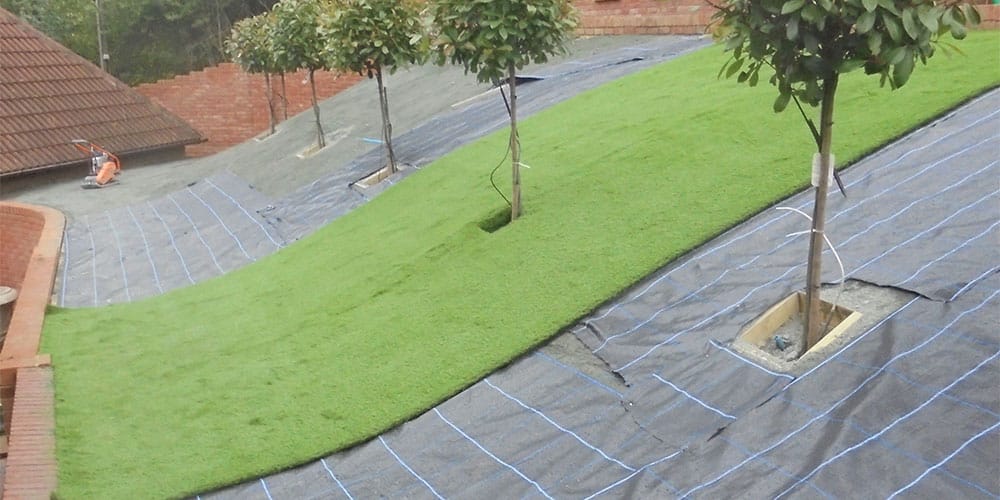Ways To Install Artificial Grass On Slope In El Cajon

- Before installing artificial grass on a slope, the first step is to prepare the area. Begin by clearing any debris, rocks, or weeds from the slope. You should also make sure the surface is relatively smooth and even, as this will help with the installation process. If the slope is particularly steep, you may need to create terraces or retaining walls to level the surface.
- Drainage is a crucial factor when installing artificial grass on a slope. Without proper drainage, water can accumulate and damage the turf over time. To address this, consider installing a drainage system beneath the artificial grass. This can be achieved by using a perforated pipe and a layer of crushed stone or gravel. Ensure that the drainage slope follows the natural contour of the land to prevent water from pooling.
- Weeds can be a persistent problem, even on sloped surfaces. To prevent weeds from growing through the artificial grass, it is essential to use a high-quality weed barrier. The weed barrier should be placed beneath the artificial grass and on top of the prepared slope. This will help keep your artificial lawn weed-free and looking pristine.
- Securing the artificial grass properly is vital on sloped surfaces to prevent shifting or wrinkling. Use landscape staples or turf nails to anchor the edges and seams of the turf. It’s essential to use enough staples or nails to hold the turf securely in place, especially on steep slopes. Additionally, consider using adhesive or seaming tape to ensure the seams are well connected, preventing any gaps or uneven surfaces.
- Infill material is essential for maintaining the appearance and durability of your artificial grass, especially on slopes. Infill helps support the blades, provides cushioning, and improves drainage. For sloped areas, choose an infill material specifically designed for inclines. This infill should be evenly spread across the entire surface and brushed into the grass to ensure proper distribution.
FAQs
Can I Install Artificial Grass On A Steep Slope Myself?
While it is possible to install artificial grass on a steep slope as a DIY project, it can be challenging, especially if you have no prior experience. It’s often recommended to hire a professional landscaper who has experience with slope installations to ensure the best results.
How Often Do I Need To Replace The Infill Material On A Sloped Artificial Grass Surface?
The frequency of infill replacement depends on factors such as usage and weather conditions. Generally, infill should be replaced every 3-5 years to maintain the performance and appearance of your artificial grass, but sloped areas may require more frequent inspections and replenishment.
Can I Install Artificial Grass On A Very Steep Slope?
Installing artificial grass on extremely steep slopes may not be practical and could pose challenges in terms of stability and drainage. It’s essential to consult with a professional to evaluate whether your slope is suitable for artificial grass installation.
Conclusion
Installing artificial grass on a slope can transform an otherwise challenging area into a beautiful, low-maintenance landscape. By following these five key steps – preparing the slope, ensuring proper drainage, using a quality weed barrier, securing the turf, and applying the right infill material – you can achieve a stunning and long-lasting artificial grass surface on your slope. Remember to consult with professionals when in doubt, and enjoy the benefits of a lush, green lawn without the hassle of maintenance on even the most uneven terrains. For more information, contact Artificial Grass El Cajon at (619) 202-8848.

